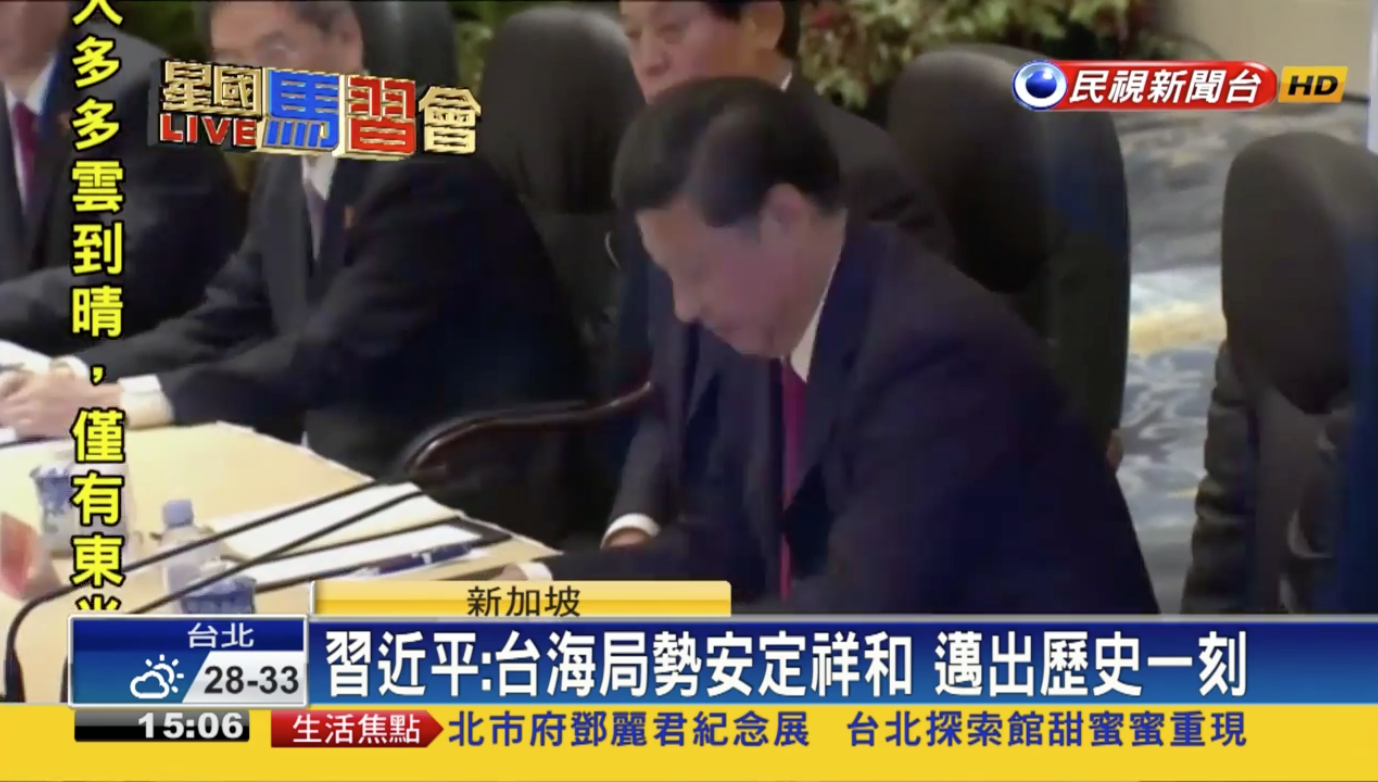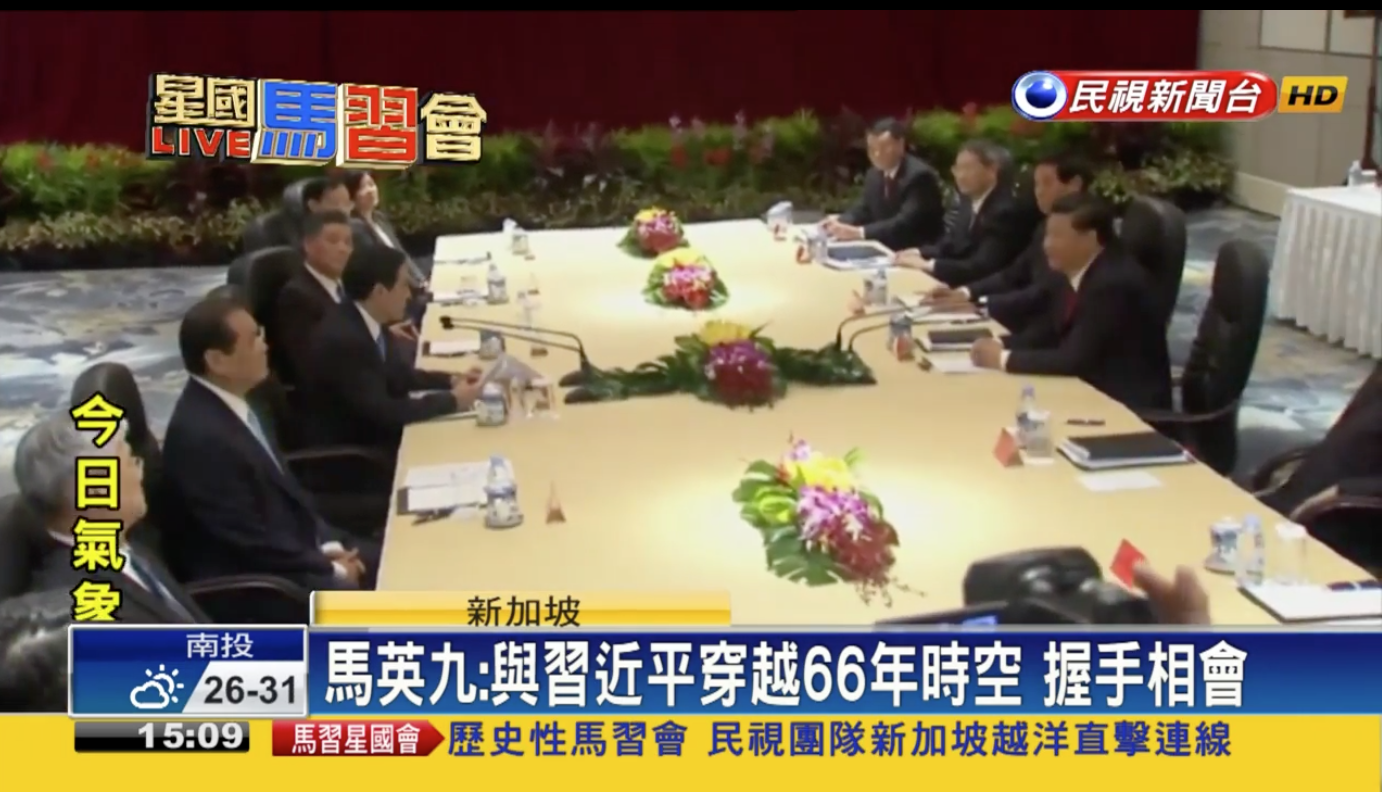Daily Bloom is the shortform blog of New Bloom, covering breaking news events as they occur in real-time.
Meeting between Ma and Xi begins. Notably, Ma wore a blue tie and Xi a red tie. One wonders if the two color coordinated their outfits beforehand, blue being the party color of the KMT and red the party color of the CCP.
In the five minutes of discussion which were publicly streamed before cameras seem to have suddenly been cut by discussion, Xi spoke first. Xi was the more aggressive in speech, directly referring to “Chinese people on both sides of the strait” (兩岸中國人), in the sense of Chinese people as belonging specifically to the country of China (中國). Xi stressed that both sides of the strait were family, stressed the inseparability of the Chinese people on a fraternal, brotherly basis–directly using the term brother (兄弟).

On the other hand, in Ma’s opening statement, Ma referred to the Chinese people in the ethnic, abstract sense (中華民族) and stating that he hoped for more cross-strait exchanges in the future. As examples, he cited Chinese tourism and students studying in Taiwan. Although it is actually somewhat surprising he mentioned the former, in regards to the latter, Ma discussed his hope that seeing Chinese and Taiwanese students mutually discussing on campuses without any sense of hatred toward each other would be a model for cross-strait exchanges. The most surprising aspect of Ma’s speech may that would more generally refer to a sense of cultural China in referring to Taiwanese and Chinese as “descendants of the yellow emperor,” however. In this sense, Taiwan was completely absent from Ma’s speech and, unsurprisingly, Ma offers an entirely Han-centric vision of Taiwan here.

Despite the fact that Ma claimed that no policy would be coming out of this meeting, Ma took the opportunity to put forward “Five Principles” for future cross-strait relations:
1.) Maintain the 1992 Consensus
2.) Maintain peace and harmony
3.) Increase exchanges
4.) Establish a hotline for direct communication across the straits
5.) Cooperation for the rejuvenation of China (中華)
Interestingly enough, stressing the importance of the 1992 Consensus, Ma emphasized the “one China” aspect of it in terms of reference to the “one China principle”. What is interesting to note, however, is that if Taiwan or even the “Republic of China” was not mentioned in Ma’s speech, neither was the “People’s Republic of China” mentioned in Xi’s speech–although unlike Ma, and probably reflecting his stronger standing in the meeting, Xi did directly refer to “China” (中國). With both, there would be that what is being discussed here and referred to by both Xi and Ma is an abstract, cultural notion of China. And this notion of an abstract, cultural China shared between the two straits will likely be the common ground upon which discussions between Xi and Ma will take place during this meeting.
.
Author: Brian Hioe
Photo Credit: FTV
Biography: Brian Hioe (丘琦欣) is an M.A. student at Columbia University, a freelance writer on politics and social activism, and an occasional translator. He is a resident of Taipei, Taiwan.

